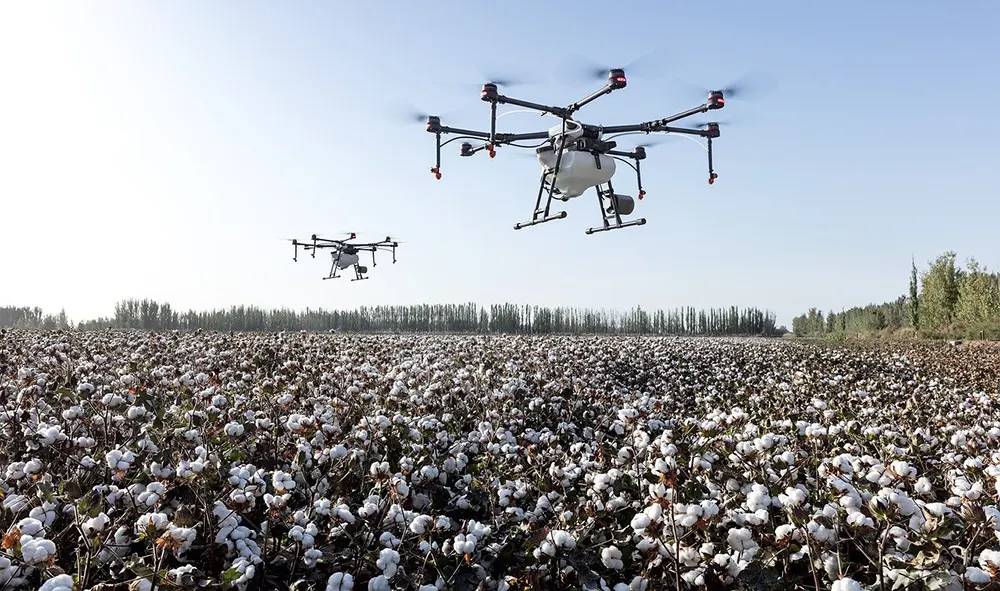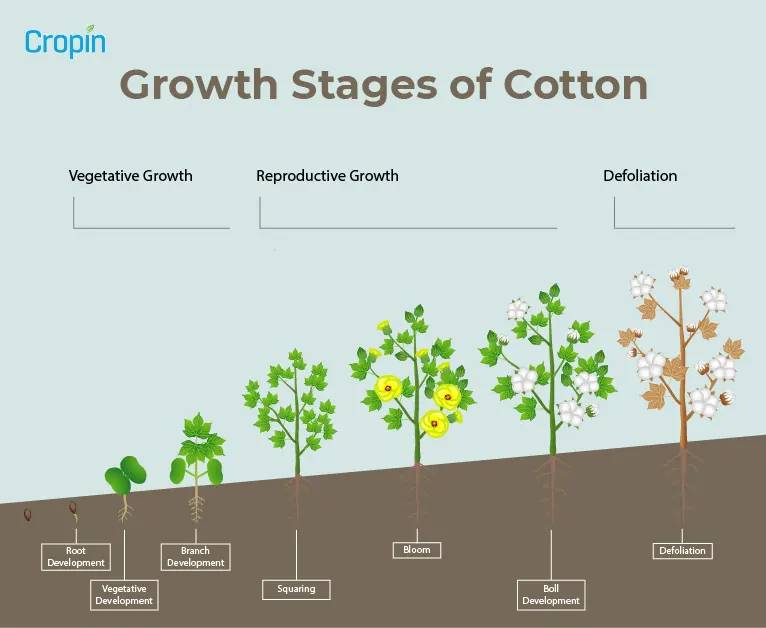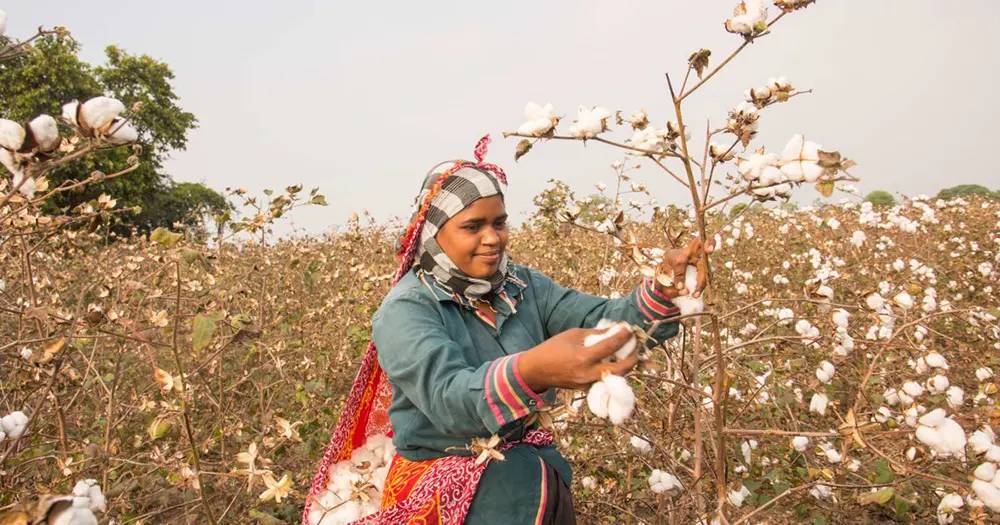The demand for cotton as a commodity has grown exponentially since the industrial revolution of the eighteenth century. It also revolutionized the textile market due to its strong, breathable, and dye absorbent fibers, changing how people dressed. A variety of inventions and technological advancements have since transformed the cotton industry. The global cotton market was US$ 38.54 Billion in 2020 and has the potential to reach US$ 46.56 Billion by 2027 at a CAGR of 2.74%.
Cotton is a perennial crop that requires long frost-free periods, high temperatures, and plenty of sunshine, with moderate irrigation or light rainfall in the growth phase. Globally, nearly 25 million tonnes of cotton gets produced every year, most of which originates in India, China, and the United States.
Sustainability issues that impact soil quality, biodiversity, and profitability encourage producers to implement sustainable agriculture practices and technologies, to reduce environmental impact and improve crop productivity.
Here is a detailed discourse on the what, why, and how of sustainable cotton production.

Recent Developments in Cotton Production
Cotton, as agricultural produce, continues to contribute notably to several developing countries’ economies as well as millions of livelihoods worldwide. Like all other basic human requirements, textiles also continue to witness growing demand with an ever-increasing population. Among the broad range of available fibers that can address this rising demand, cotton gets the highest priority, especially in Asian countries.
The following data reinforce this fact.
- 2019-20 saw a 4% growth in global organic cotton production.
- In this period, 229,280 farmers used 588,425 hectares of land to grow 249,153 tons of organic cotton fiber across 21 countries.
- The top 7 cotton-producing countries contribute to 95% of global cotton production, with India and China making up 50% and 12% of output, respectively.
The cotton industry faced business disruptions last year due to the pandemic. Yet, the US Department of Agriculture (USDA) estimates a 4.1% growth for the 2021-22 season.
However, the increased demand for cotton production calls for greater consumption of resources. It is here that sustainable agriculture comes to play to prevent the depletion of natural resources.

Need for Sustainable Agriculture in Cotton Production
The soaring demand for cotton is palpable because it is the raw material for numerous textile and home furnishing products, medical and healthcare kits, and cosmetic and soap products. It is also commonly used in coffee filters, fishing nets, tents, cotton paper, cloth bags, and bookbinding. While humans consume cottonseed oil like other vegetable oils, the cottonseed meal, a byproduct, is often fed to ruminant livestock. Cotton’s diverse applications make it the most prevalent and profitable non-food crop globally.
So, how does cotton production interfere with ecological balance?
Cotton is a natural fiber and requires land and water, unlike artificial fibers such as polyester and rayon. Its production is spread over almost 3% of arable land worldwide. However, in itself, cotton does not require many other resources to thrive since it is a drought- and heat-resistant crop. Therefore, the implementation of green agriculture via Cropin’s digital platform can help with the following objectives, all at the same time.
- Improve the efficiency of cultivation techniques;
- Increase agricultural produce manifold;
- Maintain ecological balance through good agricultural practices.
Besides, Cropin’s traceability solution RootTrace allows customers to verify the sustainable cultivation and sourcing of the received end-products. This, in turn, can help brands build trust and reliability.
How Can Farmers Ensure Sustainable Cotton Production?
Here are a few ways in which farmers and farming companies can implement sustainable agriculture for cotton cultivation.

Minimize the Potential Harmful Effects of Pesticides
Generally, cotton cultivation does not require extensive pesticide application for protection against diseases. While only young cotton plants are somewhat vulnerable and will require the most insecticide application, it accounts for nearly 24% of the global insecticide use. In India, anywhere between 40 and 50% of all pesticides used in the country are in cotton production.
Farmers can optimize crop protection by practicing precision agriculture to reduce the unnecessary use of harmful chemicals. SmartRisk helps cotton-producing companies with the exact identification of areas with low crop performance via 360-degree monitoring. It helps prevent water and soil pollution via fertilizer and pesticide run-off and also increases crop productivity.
Using Freshwater Resources Sustainably
Cotton is a Kharif crop, which makes it highly resistant to hot weather conditions. It is a drought-resistant crop and does not require significant irrigation. Light rainfall or proper irrigation can contribute to most of the water requirements of cotton plants. However, according to research by Water Footprint Network, producing 1 kilogram of cotton in India consumes 22,500 liters of water, on average, compared to the global average water footprint of 10,000 liters. The difference in water consumption is due to inefficient water use and high rates of water contamination due to pesticide run-off. The excessive water consumption also translates to a proportional volume of the loss of virtual water through exports to other countries.
Efficient water conservation practices can help producers overcome these challenges. In addition, farmers can get accurate weather predictions via SmartFarm , plan for irrigation when needed, and take preventive measures in case of unfavorable weather conditions.
Take Better Care of Soil Health
Regenerative agriculture encourages soil-renewing farming practices. These include minimizing soil disturbance by reducing tillage, providing soil armor, and cultivating a wide range of crops throughout the year. A protective layer of green plant roots facilitates symbiosis, acting as a natural fertilizer. Similarly, practices like crop rotation, cover cropping, and companion cropping can help the soil retain a balance of different nutrients synthesized by various plants.
Mitigate Biodiversity Loss Due to Agricultural Activities
The mentioned farming practices constituting sustainable agriculture, like reducing tillage and diversifying plant species, are intrinsic to maintaining biodiversity loss. Another technique that can cater to this cause is intercropping. In this process, cotton cultivators can grow other plants alongside cotton on the same farm to promote beneficial interactions. Additionally, they can plant cover crops and trees with deep roots to prevent soil erosion by water and wind.
Promote Decent Work for Socio-Economic Development
Cotton farming employs about 7% of all labor in developing countries and is a source of livelihood for more than 250 million people worldwide. However, the production involves maximum risk and minimum reward for the farmers. In addition to considering environmental impact, sustainable cotton production needs to address its socio-economic impact on farmers, their families, and the extended community at large. It includes concerns such as the demanding working conditions of farm workers, their health and safety, economic insecurity, the incidence of child labor or bonded/forced labor, and the treatment of women/girl workers. Several international textile and fashion brands are supporting projects that ensure decent and ethical working conditions. In this regard, implementing traceability to the source can effectively promote the welfare and rights of the farm workers.
Sustainable Cotton Production: Cropin Success Stories
With its technology-driven platform, Cropin has enabled the following organizations to prosper via sustainable cotton cultivation.
Organic Cotton Accelerator
Cropin started working with the Organic Cotton Accelerator (OCA) in 2017. Since then, it has helped the global organization achieve its goal of promoting organic cotton production:
- Increasing the visibility of cotton production by digitizing 64,300+ acres and 26,100+ cotton farmers
- Monitoring the health of the crop to estimate yield output and reduce losses
- Ensuring a higher degree of compliance with GMO regulations
- Tracking farmer payments, especially premiums paid for following organic practices
Plexus Cotton
Cropin served as the technology partner for Technoserve, with which Plexus Cotton collaborated for a project in Mozambique in 2016. Cropin’s primary role here was:
- Digitizing the entire cultivation process for 40,000+ smallholder farmers.
- Increasing accountability and ease of doing business
- Providing crop advisory during instances of weather risks, pest infestations, and outbreaks of disease
- Maintaining complete traceability for CMIA (Cotton Made in Africa) certification
Organic cotton production can be one of the primary building blocks of sustainable agriculture with the proper farming techniques. Understanding the environmental need for the same and implementing the discussed practices can help progress the already growing movement towards sustainability.
With Cropin, you can accelerate this journey and steer clear of disruptions better.









